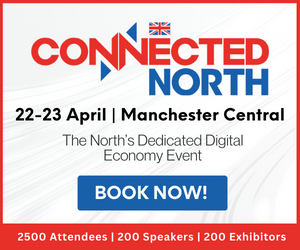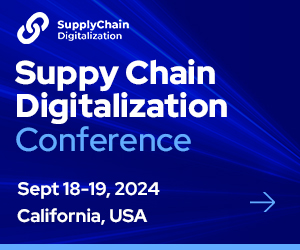If you are in B2B sales, you have witnessed the change in the process of selling to customers over the last few years. Even before the pandemic, buyers were researching new enterprise solutions and making better-informed buying decisions. Many if not most B2B buyers are using self-service portals. Budgets are tighter and the stakes of making selecting a vendor is higher, and as a result, more stakeholders are involved in the buying process, each with their own needs and agenda.
Where enterprise selling used to be about selling features and benefits, it has become more consultative, applying your solutions to challenges customers face. Hybrid selling requires you to do more than just walk a prospect through a spec sheet. You need to align features and benefits with customer needs while sometimes virtual and sometimes in-person. It helps if you are a subject matter expert in the customer’s industry as well as an expert on your own technology.
Personalization Is the Starting Point
A personalized approach to selling is essential, which means more than dropping a logo into a PowerPoint. You need to do your homework and have a tactical plan to achieve a positive outcome.
The place to start is by assessing the customer’s potential for growth. Not all accounts have the same value or may be worth the same investment in time and resources. The account may not have the same growth potential or require too much maintenance.
Develop an understanding of the prospect’s strategic success factors, such as long-term goals. Determine what and who will influence the buying decisions and identify the various stakeholders’ motivations. Then you can outline your value proposition in a compelling way and communicate that value using what you know about the company and its stakeholders.
Understanding the decision-making styles of the B2B buyers helps with engagement. We use the DISC profiles to identify communication styles:
D types–Dominant buyers are direct, have strong personalities, and have an impulsive decision-making style. The best way to communicate with D types is to:
- Talk about benefits, not features
- Focus on how you can help them reach their goals
- Listen carefully and reassure the buyer they are being heard
- Ask targeted questions and do not waste their time
- Be direct when answering questions
I types – Influence-type buyers are more friendly and welcome small talk. Influencer buyers like to see testimonials and hear about benefits. They also tend to be less detail-oriented and focus on the big picture, so when you communicate:
- Be friendly and upbeat
- Engage by asking for ideas and opinions
- Talk about long-term benefits and avoid dwelling on details
- Use stories to illustrate benefits and solutions
S types – Steadiness types are more patient and easygoing. They use a people-oriented approach but also tend to be more reserved. They also tend to be methodical in decision-making and risk-averse. To communicate with S types:
- Give them time to consider, and don’t pressure them to close too quickly
- Be patient and take your time with explanations
- Answer questions directly
- Show that you want a long-term relationship rather than a quick close
C types – Compliance types tend to be analytical and focus on doing things the “right” way. They are skeptical and want proof of results before they to a change. To communicate with C types:
- Back up claims with hard data
- Be conservative when making assertions
- Be precise when answering questions
- Be courteous and use a diplomatic tone
Adapting the Sales Pitch to the Buyer
Successful B2B sales are built on the value you bring. Each conversation should center around how you can help the prospect achieve their business objectives. B2B reps who don’t do their homework tend to start by asking, “what’s your biggest challenge,” or they start talking about features before they gauge interest. And end up with short meetings and few new opportunities.
Rather than selling features and benefits, you start with building trust. Buyers interact with trusted vendors differently, looking for value-added services and a better customer experience. You need to actively listen and remember that the buyer demands to be heard. You can no longer sell a one-size-fits-all solution.
Virtual selling over Zoom makes it harder to read expressions and body language, which many enterprise sales reps see as a disadvantage. Since you can’t always rely on face-to-face meetings, you must build relationships using virtual sales calls. There are some tactics you can apply to cement a relationship via teleconference:
- Command their attention –People tend to get distracted in virtual meetings. It’s too easy to check email or try to multitask. Your first job is to get the prospect’s attention. Ask direct, pointed questions. Use a compelling PowerPoint tailored for the call. Share your screen to make the discussion more interactive. Ask for feedback and reinforce that they understand the pitch.
- Review their reaction – You may not be able to read body language but listen for verbal cues. Listen to how they are reacting as well as what they say. If you listen closely, you can assess their engagement level and make a more successful pitch.
- Be empathetic –Listen closely and acknowledge what the prospect has to say. If you can be sympathetic to their needs and show you are listening, it will help forge a closer working relationship.
Remember that being liked is different than being trusted. Trust is based on your ability to present a compelling argument and offer solutions that the buyer sees as valuable. If you can prove you understand their needs and wants, and can solve the problem, you are halfway to closing the deal.
A well-defined, structured approach to virtual enterprise selling allows you to personalize the sales pitch and demonstrate value as part of a consultative engagement. Understand the buyer. Determine what motivates them. Create an approach tailored to highlight the value of your offer. The more you know about your prospect, the more personalized your approach and the greater your sales success.












